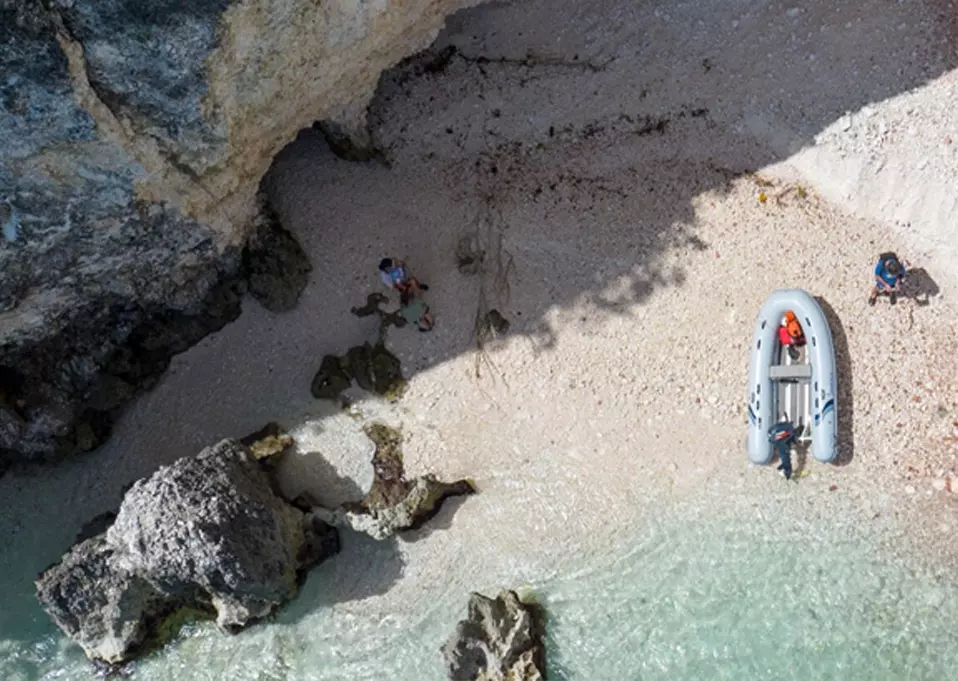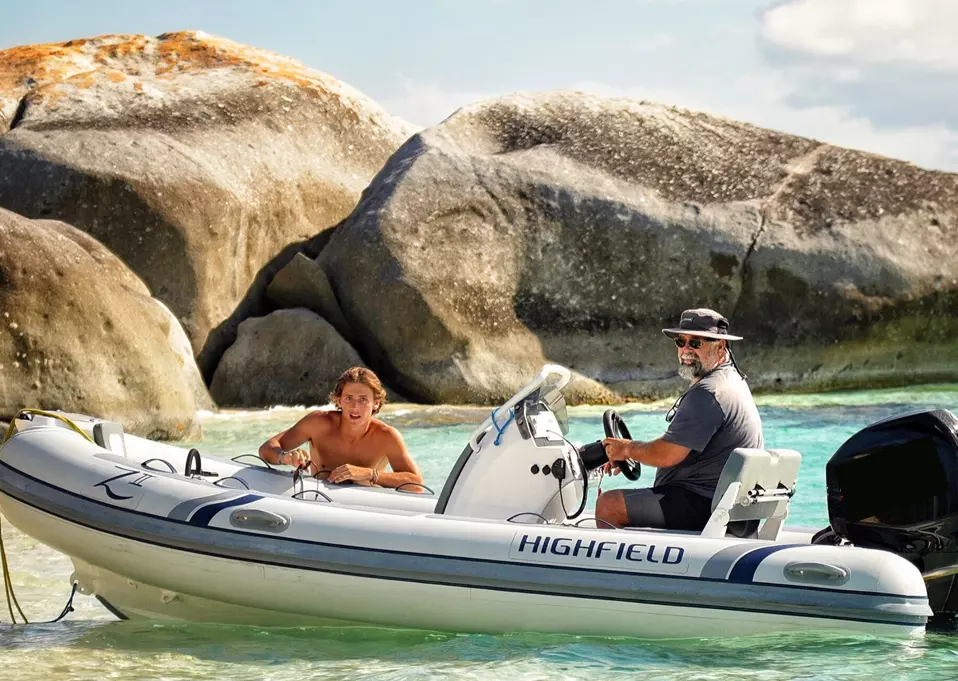
Anyone who spends time at sea knows it well: the tender isn’t just an accessory—it’s an essential part of life on board. Whether it’s a nimble inflatable or a small rigid dinghy, the tender serves as our bridge between the yacht and the shore, our reliable companion for exploring hidden coves, making quick supply runs, or simply enjoying a quiet row at sunset. Yet, all too often, this little vessel is treated with a carelessness that doesn’t quite match the environment it operates in—the sea, always beautiful, but never entirely predictable.
Tender safety is a topic that’s frequently underestimated. We rely on routine, thinking “it’s just a quick trip,” but it’s precisely in those moments—when our guard is down—that problems can arise. That’s why it’s so important to treat the subject with the same respect we give to offshore sailing. Because when something goes wrong on a tender, it can quickly become a serious situation.
The Value of a Long, Versatile Line
It may seem like a small thing, but having a long, sturdy line on board can make a world of difference. It can help you moor more securely, tow another vessel in case of engine trouble, or tie off to a rock when there’s no proper dock in sight. In busy harbors or popular anchorages where creative mooring solutions are the norm, a good line often means the difference between a safe landing and an early return to the mothership.

Keep Those Tubes Inflated and Ready
Inflatable tenders need regular checks. A deflated tube isn’t just unsightly—it compromises stability, makes the boat more vulnerable to waves, and reduces engine responsiveness. Having a hand pump with a pressure gauge on board may seem like overkill, but it’s invaluable if you need to top up a slow leak or deal with pressure loss after a hot day under the sun or a chilly night.
Don’t Take Fuel for Granted
How many times have you assumed the tank was full, only to find out midway that it wasn’t? It’s a common oversight that can turn a short trip into a frustrating ordeal. Make it a habit to check the fuel level before every departure. For longer outings, bring a spare canister just in case. And don’t forget—if your engine requires it, open the fuel valve or mixture tap before starting. This simple habit can save you several minutes of confusion and effort.
Paddles: Your Trusty Human-Powered Engine
Even if your outboard is purring perfectly, paddles should always be on board. They’re your safety net if the engine fails, but also useful for maneuvering silently near swimmers or tight spots. In some cases, a single, lightweight paddle is more convenient than traditional oars, especially on smaller tenders.
Anchor Up—Even for Short Stops
Having a light anchor—preferably foldable—with at least 15 to 30 meters of line is a small investment that offers a lot of peace of mind. Whether it’s for a swim stop or a mechanical issue, the ability to stop and hold your position safely is crucial. In areas with current or wind, a quickly deployed anchor can prevent a bad situation from getting worse.
Communication is Protection
No matter how short the trip, always carry a reliable means of communication. A handheld VHF or even just a mobile phone in a waterproof case can make a big difference. Imagine you have engine trouble and can’t return to the boat—being able to call for help changes everything. If you're going out after sunset, bring a headlamp or a strobe light too. Making yourself visible is not just smart—it’s safe.

Don’t Underestimate the Wind
Tenders are light, often lacking a keel or rudder, which makes them extremely susceptible to wind, even a light breeze. Always assess the wind direction and strength before heading off. If in doubt, have someone stay on the main boat to keep an eye out. A drifting tender, especially with children or inexperienced guests aboard, can be difficult—and stressful—to retrieve.
Life Jackets: Always On, Not Just “When Necessary”
Life jackets are often overlooked on tenders. We tell ourselves, “It’s just a two-minute ride.” But the sea doesn’t play favorites. A sudden gust, an awkward step, or a slip can easily toss someone overboard. Wearing a life jacket not only keeps you afloat—it makes climbing back in much easier, especially in cold water or when help is unavailable. And for those with children on board, it’s not just practical—it’s a moral imperative.
Need more info? Send us an email at: info@nsscharter.com
For any information send us a message 


